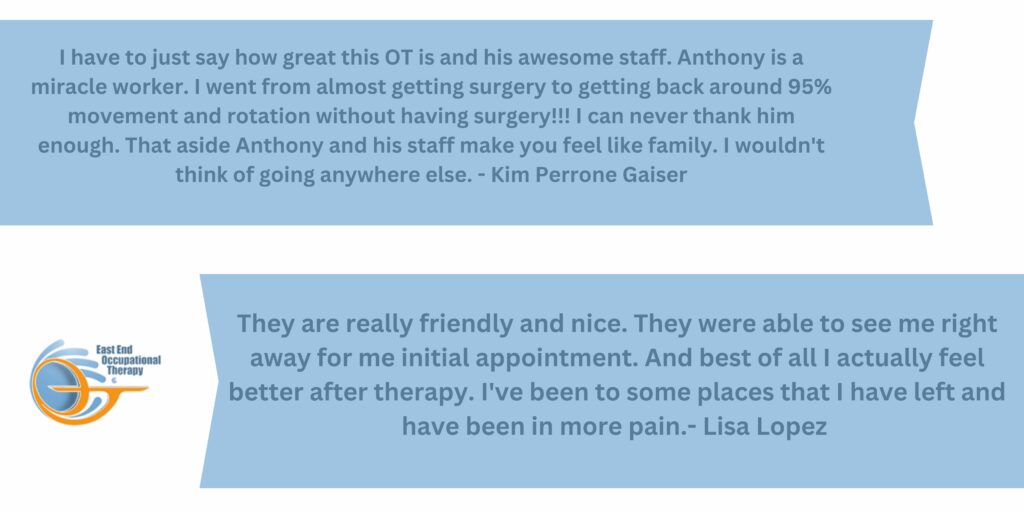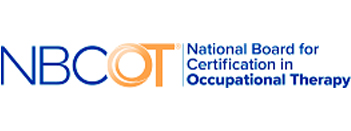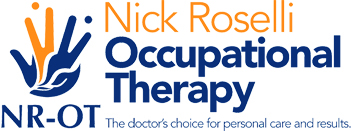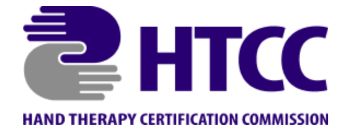Occupational Therapy in Plainview NY
Occupational Therapy in Plainview NY
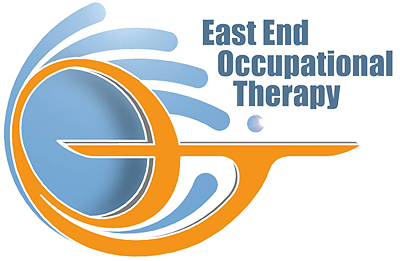
East End Occupational Therapy in Plainview NY is a specialized hand and upper extremity rehabilitation practice that has been dedicated to providing a complete and comprehensive range of occupational therapy services to its patients. The East End Occupational Therapy team strives to deliver the best evidence-based care possible through our client-centered approach. Not only is our practice in direct contact with your physician from the initial examination through your discharge, but we also work closely with your surgeon to develop an optimal plan of care with the goal of restoring your functional independence. Most of us rely on our hands routinely, and it is not until we suffer an injury that we recognize the importance of our hand function when performing daily living skills. We accept a wide range of insurance services available.
What Are The Types of Occupational Therapy?
On occasion, people who want to complete certain activities or tasks cannot because of physical or emotional limitations. At East End Occupational Therapy in Plainview NY we do not want to let these unfortunate limitations prevent you from living your everyday life. That is why we offer occupational therapy for all our patients needing treatment. To learn more about this medical specialty and the different types of occupational therapy we offer, continue to read.
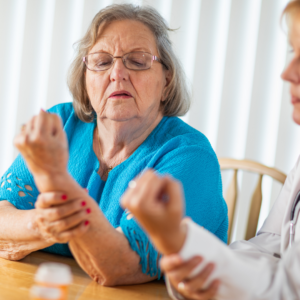
What Is Occupational Therapy?
Occupational therapy is a service that helps patients gain or regain skills that allow them to complete everyday tasks. An occupational therapist’s job is to teach patients new ways to complete these tasks or help them relearn the bodily mechanisms that were initially lost. In some cases where movement or physical ability was lost, our occupational therapists may create or prescribe the use of assistive devices to allow patients to maintain independence in their daily lives. Some of the most common activities we can help patients learn to complete include:
-
- Bathing.
-
- Getting dressed.
-
- Eating.
-
- Moving around freely.
-
- School or work-related tasks.
What To Expect
The process can be nerve-racking if occupational therapy has been recommended to you or a loved one, but you are unsure what to expect. To help ease any stress, our team would like to lay out what you can expect to take place during your OT session. During your initial visits, our skilled occupational therapists will help determine what goals you are looking to meet. Once these goals are set, sessions are shifted toward education and training. This training can focus on any of the unique following:
-
- Mental tasks.
-
- Strength.
-
- Balance.
-
- Coordination.
-
- Social interaction.
The Different Types Of Occupational Therapy
When it comes to occupational therapy, multiple types will be beneficial to different patients. Understanding what this service can bring will help determine if it is right for you or a loved one. Examples of the different types of occupational therapy that are offered can be found below:
General Occupation Therapy Program
In its most overarching form, general occupational therapy focuses on helping patients whose functional capabilities are impacted by pain, injury, disability, or illness. It can help:
-
- Children complete tasks at school.
-
- Adults manage their work responsibilities.
-
- Teach self care skills so people can remain independent.
-
- Allow patients to participate in sports or remain active.
Patients of all ages can benefit from this form of occupational therapy, as sometimes all they need is a little help to get their lives back on track.
Pediatric Occupational Therapy
As the name suggests, pediatric occupational therapy focuses on helping children. Several different stimulants could culminate in your child needing OT care, such as any of the following conditions:
-
- ADHD.
-
- Developmental disorders.
-
- Poor vision or hearing.
-
- School trouble.
-
- Learning disabilities.
Occupational Therapy For Autism
Autism is a condition that falls onto a wide spectrum of severity and affects people of all ages. Occupational therapy can be used to help those dealing with this condition. These sessions can take place at school, daycare, or even from their home.
Geriatric Occupational Therapy
As people age, we tend to lose control of bodily functions slowly. This loss of autonomy can be difficult to deal with, as many people fear they will be unable to remain independent as a result of these developments. Geriatric occupational therapy can help the older generations cope with and manage their new limitations, so they don’t have to give up their right to live happily on their own.
Occupational Therapy in Plainview NY For Mental Health
Occupational Therapy in Plainview NY for mental health is a continually growing field. Your mental health should always be treated with the utmost importance, and our occupational therapists can help patients learn efficient self-care methods. Conditions occupational therapy is used for can include the following:
-
- Panic attacks.
-
- Depression.
-
- Schizophrenia.
-
- Bipolar disorder.
Environmental Modification
One final type of occupational therapy worth mentioning is environmental modification. Occupational therapists specializing in this field will look around your home, school, or workplace to see if any modifications can make your life easier. This process can include installing the following for your benefit:
-
- Ramps.
-
- Wider doors.
-
- Support bars in restrooms.
-
- Lower or higher cabinets.
Contact Us
At East End Occupational Therapy in Plainview NY, we want all of our patients to be able to live their lives to the fullest. If you or a loved one needs occupational therapy, you can trust that our team will provide the services that you need. For more information on this form of care, don’t hesitate to contact us today at our new Plainview location.
Contact East End Occupational Therapy in Plainview NY
WHAT CAN I DO FOR WEAK WRISTS?
Are you suffering from weak wrists and are unsure why? You could suffer from weak wrists for numerous reasons, but no need to fret. At East End Occupational Therapy in Plainview NY, we can help put you on the road to recovery. With simple wrist exercises and stretches, you can strengthen your wrists and make them more flexible. Contact us today to see how we can help!
CAUSES OF WEAK WRISTS
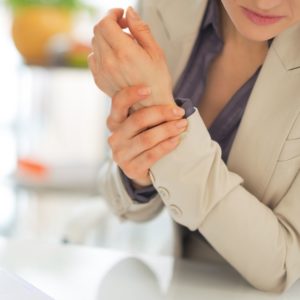
The first thing to improve your weak wrists is to determine the cause. Visiting an occupational therapist is the best option for finding the root cause and the best treatment route. Some of the causes of weak wrists are:
-
- Carpal Tunnel: tissues surrounding flexor tendons swell
-
- Pinched nerve: when something presses against and irritates a nerve in the neck
-
- Ganglion cyst: fluid-filled sacs near joint or tendon
-
- Arthritis in hand: pain, swelling, cysts, decreased range of motion
-
- Cubital tunnel: ulnar nerve becomes irritated, inflamed, swollen, or compresses
WHAT CAN I DO FOR WEAK WRISTS?
Once the cause of your weak wrists is determined, it is time to figure out the best treatment path. Stretching and exercising every day is crucial to seeing real improvement in the health of your wrists. Soon these stretches and exercises will become second nature, and your wrists will become very healthy. To read more in-depth explanations about these exercises. Here are some Treatment for weak wrists:
-
- Range of motion: making a fist and then flexing your hand. This will warm up your wrist for further exercises.
-
- Ball squeeze: using a rolled-up towel, squeeze and hold. This can help strengthen your wrist.
-
- Wrist Walking: Begin with your hands on a wall walk up and down the wall. Make sure to keep your fingers pointed away from how you move.
-
- Wrist Curls: While sitting, rest your arms on your legs. Hold a weight and lift your hand as far as it can go without lifting your arms.
CONTACT EAST END Occupational Therapy in Plainview NY
At East End Occupational Therapy in Plainview NY, we can help find the root cause of your weak wrists and determine a personalized treatment plan. Please don’t wait; contact our provider today!
HOW LONG DOES KNEE BURSITIS LAST?
Knee bursitis is inflammation or irritation of one or more of the bursae in your knee. It involves inflammation of a small fluid-filled sac, known as the bursa, that resides near your knee joint. Anyone can get knee bursitis, but experts estimate that about 80% of cases occur in men, with those between the ages of 40 and 60 most likely to be affected. If you are searching for Occupational Therapy in Plainview NY to help with knee pain, East End Occupational Therapy is here to help.

What is a Bursa?
Bursa is a thin “sac” that sits between tissues, bones, and joints in your body. You have bursa beyond your knees and all over your body, including in your hips, shoulders, elbows, and ankles. Bursae exist to reduce friction and cushion pressure points between the bones and tendons in your leg. Any of the eleven bursae in your knee can become inflamed.
Symptoms of Knee Bursitis
Knee bursitis can occur due to repetitive irritation, trauma, or infection. The cause for the condition cannot always be distinctly identified. Even though there are a variety of reasons that knee bursitis may develop, there are some common causes of the condition. These include athletic injuries, prolonged kneeling, obesity, and osteoarthritis.
Symptoms of the condition may include swelling, warmth, tenderness, and redness in the knee. It is usually only mildly painful and frequently associated with kneeling pain. A symptom during kneeling might be stiffness and pain when walking.
Steps to Treating Knee Bursitis at Home
The first step in treating this condition is rest. Give your knee a break from the activity that is straining and uncomfortable. Avoid activities that heavily use the knee. Next, work on getting inflammation down with anti-inflammatory pain relief, such as ibuprofen, if you can. Simple rest and over-the-counter medications will likely work together to reduce the swelling for your knee to properly heal. These home remedies and Occupational Therapy in Plainview NY will put your knee in great shape in no time.
How to Treat Knee Bursitis
This is a condition that is healed over time. Treatment is often aimed at relieving the symptoms that are causing persistent pain. There are a few options for treating knee bursitis.
Medications can be used to treat infections caused by the condition. This is something that needs to be prescribed by a doctor. A course of antibiotic treatment can heal infections and relieve pain.
Your doctor might suggest that you partake in physical therapy to treat knee bursitis. Occupational Therapy in Plainview NY can work with you to improve your flexibility and strengthen your muscles. This could reduce the pain in your knee and lower the chances of knee bursitis happening again.
Surgical procedures may be recommended as a more invasive treatment. This is usually done because of a swollen bursa that ends up restricting one’s activity. Most cases of knee bursitis do not require surgery because the condition improves over time.
How Long Does Knee Bursitis Last?
The length of one’s knee bursitis may vary for each individual. With the proper treatment, knee bursitis can be healed in an average of two to eight weeks. You must practice proper stretching, strengthening, and exercise for a speedy recovery from this condition.
East End Occupational Therapy in Plainview NY
The health of your knees is very important to your quality of life and ability to move freely. If you are struggling with pain in your knees, East End Occupational Therapy is trained to relieve your pain and improve your knee strength and health. Contact Occupational Therapy in Plainview NY today to set up an appointment and keep your knees moving and healthy!
WHY DOES MY RIGHT ARM HURT BETWEEN THE SHOULDER AND ELBOW?

It is not uncommon to experience arm pain at some point in our lives. The arm is a complex structure of bones, joints, muscles, tendons, and ligaments. All of these structures can be potential sources of pain. One common cause of arm pain is rotator cuff tendinitis. This condition occurs when the tendons of the rotator cuff become inflamed. A rotator cuff is a group of muscles and tendons that attach the shoulder blade to the upper arm bone. These muscles and tendons help lift the arm. The East End Occupational Therapy in Plainview NY can help relieve your pain between your shoulder and elbow today!
Rotator cuff tendinitis can be caused by overuse or repetitive motions of the arm. The pain from rotator cuff tendinitis is usually felt on the outside of the shoulder and can radiate down the arm. Another common cause of arm pain is bursitis. Bursitis occurs when the small, fluid-filled sacs that cushion the joints become inflamed. The most common type of bursitis is subacromial bursitis, which affects the shoulder. Bursitis can also occur in other joints, such as the elbow, hip, or knee.
The pain from bursitis is usually a dull ache that is worse with movement. The affected joint may also be tender to the touch. Bursitis is often the result of overuse or repetitive motions. It can also result from an injury or direct trauma to the area. Visit Occupational Therapy in Plainview NY, for your pain today!
ROTATOR CUFF TENDINITIS EXERCISES TO TRY:
If you have rotator cuff tendinitis, you may find relief with the following exercises:
-
- Shoulder shrugs: Stand with your feet shoulder-width apart, and your knees slightly bent. Gently shrug your shoulders up to your ears and then release. Repeat 10-15 times.
-
- Arm circles: Stand with your feet shoulder-width apart, and your knees slightly bent. Extend your arms out to the sides at shoulder level. Slowly make small circles with your arms, moving them forward ten times and then backward ten times.
-
- Pendulum: Stand with your feet shoulder-width apart, and your knees slightly bent. Let your affected arm hang down in front of you. Gently swing your arm in a circular motion, going as far as possible without pain. Repeat 10 times in each direction.
BURSITIS IN THE SHOULDER EXERCISES TO TRY:
If you have bursitis in the shoulder, you may find relief with the following exercises:
-
- Doorway stretch: Stand in a doorway with your arm at 90 degrees, elbow bent, and hand on the doorframe. Begin to gently lean forward until you feel a stretch in the back of your shoulder. Hold for about 30 seconds and repeat 2-3 times.
-
- Towel stretch: Lie on your back on a flat surface with a towel wrapped around the affected arm just below the elbow. Gently pull the towel toward your head until you feel a stretch in the shoulder. Hold for about 30 seconds and repeat 2-3 times.
-
- Sleeping stretch: Lie on your back on a flat surface with the affected arm extended straight up. Gently bend the elbow and bring the hand down toward your head until you feel a stretch in the shoulder. Hold for about 30 seconds and repeat 2-3 times.
CONTACT EAST END Occupational Therapy in Plainview NY
Arm pain is a common complaint that can have many different causes. Rotator cuff tendinitis and bursitis are two of the most common causes of arm pain. These conditions can be caused by overuse, repetitive motions, or direct trauma to the area. Exercises that stretch and strengthen the muscles and tendons around the shoulder and elbow can help to relieve pain from these conditions. The East End best occupational therapists in plainview can help alleviate your shoulder and elbow pain today!
